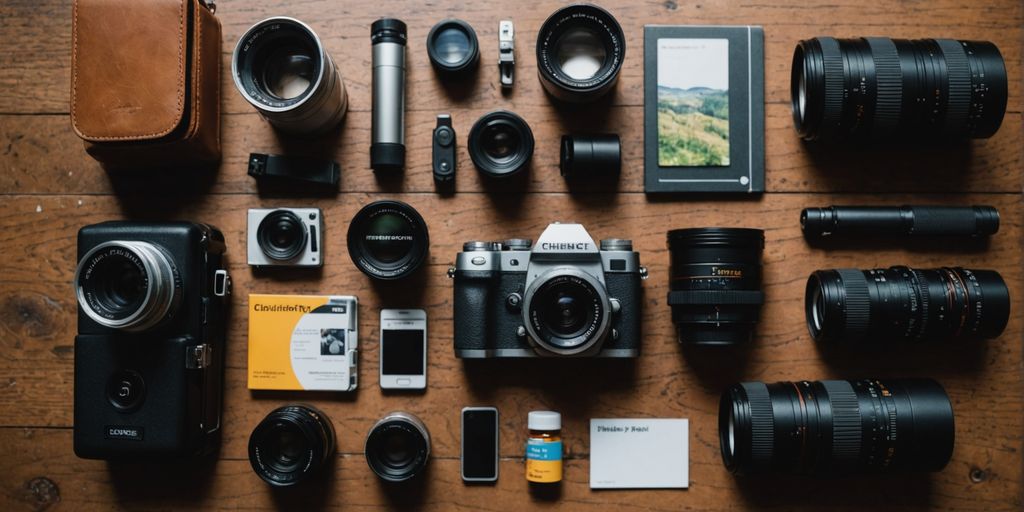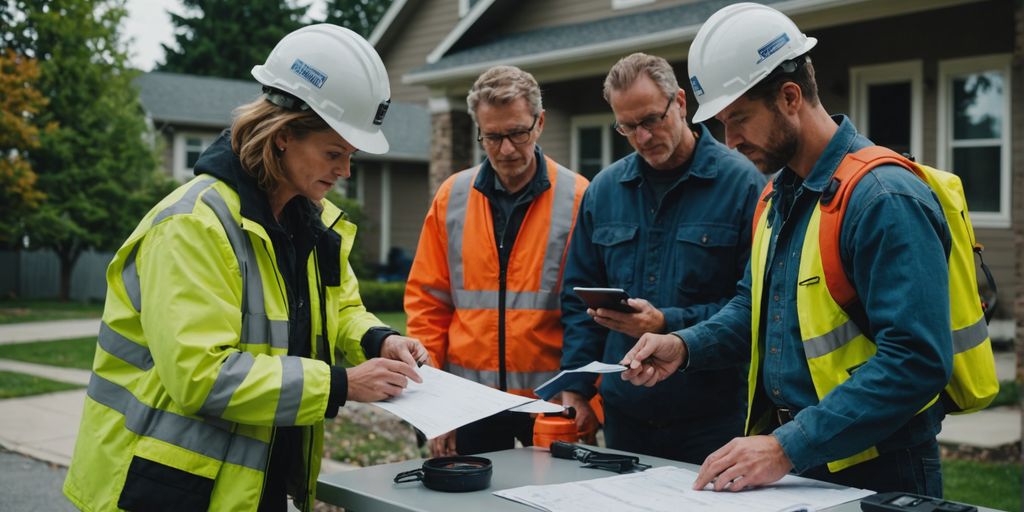Building a personal survival kit is an important step in being ready for any emergency. Whether you’re in the city, the wild, or the desert, having the right gear can make all the difference. This guide will help you understand what you need and how to put it all together.
Key Takeaways
- Know your environment to choose the right supplies for your survival kit.
- Pick a sturdy and suitable container to keep your items safe and accessible.
- Include essential items like water, food, and first aid supplies.
- Add tools and equipment such as knives, fire starters, and navigation aids.
- Regularly check and update your kit to ensure everything is in working order.
Understanding Your Environment
Before you start building your personal survival kit, it’s crucial to [understand your environment](https://pacificfirstaid.ca/blogs/first-aid-tips-news/tips-for-your-own-emergency-kit). The risks and challenges you face in an urban setting are very different from those in the wilderness or desert. Tailoring your kit to your surroundings ensures you’re prepared for the most likely scenarios.
Assessing Urban Risks
Urban environments come with their own set of challenges. From natural disasters like earthquakes and floods to man-made threats such as accidents and power outages, it’s important to be ready for anything. Make sure your kit includes items that can help you navigate these specific risks.
Challenges in Wilderness Settings
The wilderness presents unique challenges that require specialized gear. Whether you’re hiking, camping, or just exploring, your kit should include items that help you stay safe and comfortable. Think about things like shelter, food, and first aid supplies.
Adapting to Desert Conditions
Desert environments are harsh and unforgiving. High temperatures and limited water sources make survival difficult. Your kit should focus on hydration, sun protection, and ways to stay cool. Always be prepared for the extreme conditions you might face.
Choosing the Right Container
When building your personal survival kit, selecting the right container is crucial. The container you choose can make a significant difference in how well your supplies are protected and how easily you can transport them. Here are some options to consider:
Backpacks and Bags
Backpacks are a popular choice due to their large capacity and ease of carrying. They allow you to keep everything tidy and in one place. However, they can be bulky and may hinder your movement through rough terrain. It’s important to choose a backpack that fits your body well and meets your specific needs.
Portable Cases
Portable cases, such as soft-sided carrying cases, are lightweight and easy to store. They are ideal for keeping your gear organized but may not offer much protection for fragile items. On the other hand, rigid carrying cases made of plastic or metal provide better protection but are heavier and bulkier.
Waterproof Options
Waterproof containers are essential for protecting your supplies from water damage. These containers are especially useful if you are in a wet environment or expect to encounter rain. Options include waterproof backpacks, dry bags, and specialized waterproof cases.
Remember, the best container for your survival kit depends on your specific needs and the environment you expect to be in. Choose wisely to ensure your gear is safe and accessible when you need it most.
Essential Items for Your Personal Survival Kit
When building your personal survival kit, it’s crucial to include items that will help you stay safe and healthy in any situation. Here are the essential items you should consider:
Tools and Equipment
When it comes to building your personal survival kit, having the right tools and equipment is crucial. These items can make the difference between life and death in an emergency.
Shelter and Warmth
Emergency blankets are a must-have in any survival kit. These mylar thermal blankets help keep body heat in and maintain body temperature, which is crucial in preventing hypothermia. They are lightweight, compact, and can be used in various ways, such as a ground tarp or emergency signal.
A tent or tarp can provide essential protection from the elements. Whether you’re facing rain, wind, or sun, having a reliable shelter can make a significant difference in your comfort and survival. Consider carrying a 50-foot roll of plastic sheeting as an alternative; it’s versatile and can be used to create a makeshift shelter.
Proper clothing is vital for staying warm and dry. Pack extra clothing like long underwear, a hat, a jacket, waterproof mittens, and sturdy boots. Remember, cotton is very cold when wet, but wool and specialty outdoor clothing are warm even when damp. Layering your clothing can help you adapt to changing weather conditions.
Customizing Your Kit for Different Scenarios
Customizing your survival kit is crucial to ensure it meets your specific needs. A customized kit ensures you have the right tools, making it easier to handle emergencies. Here are some scenarios to consider when tailoring your kit:
Everyday Carry (EDC) Kits
An EDC kit is designed for daily use and should be compact and lightweight. It typically includes items like a small first aid kit, a multi-tool, and a flashlight. Don’t hesitate to customize your EDC kit for different trips!
Travel and Adventure Kits
For travel and adventure, your kit should be more comprehensive. Include extra prescription medications, glasses, and medical devices like inhalers or epipens. This ensures you’re prepared for any situation while away from home.
Disaster Preparedness Kits
A disaster preparedness kit should cover all basic needs for at least 72 hours. This includes water, food, first aid supplies, and tools. Be prepared with these must-have items for your family’s emergency kit. Regularly update and inspect your kit to ensure everything is in working order.
Customizing your kit promotes a culture of readiness, linking your preparedness with responsibility and foresight—qualities highly valued in emergencies.
Maintaining and Updating Your Kit
To ensure your survival kit is always ready, regularly check and replenish its contents. This means looking over each item to make sure nothing is missing or damaged. A good rule of thumb is to inspect your kit at least twice a year.
Items like food, water, and medications have expiration dates. During your inspections, replace any expired items promptly. This keeps your kit effective and safe to use.
Your survival needs can change with the seasons. In the winter, you might need extra blankets and warm clothing. In the summer, you might need more water and sun protection. Adjust your kit to match the current season.
Keeping your survival kit updated is a life-saving habit. It ensures you’re always prepared for any emergency.
Training and Skills
Basic First Aid
Knowing basic first aid can be a lifesaver. Develop the mindset to handle emergencies by learning how to treat cuts, burns, and other injuries. You can take online classes or join local workshops to get hands-on experience.
Fire Building Techniques
Mastering fire building is crucial for survival. Learn the skills to start a fire in different conditions, whether it’s wet or windy. Practice makes perfect, so try different methods like using a fire starter or even rubbing sticks together.
Navigation and Orienteering
Understanding how to navigate without a GPS is essential. Learn to read maps and use a compass. This skill can help you find your way if you get lost in the wilderness. Gain peace of mind knowing you’re ready for any situation.
Mastering essential skills like knot tying, woodworking, fire starting, and tool improvisation will enhance your ability to craft effective survival tools.
Psychological Preparedness
In the face of a crisis, staying calm is crucial. Panic can cloud your judgment and make it harder to make smart decisions. Practice deep breathing techniques and mindfulness exercises to help keep your mind clear and focused during stressful situations.
Building mental resilience is like creating an emergency self-care kit for your mind. This involves developing a positive mindset and learning to adapt to changing circumstances. Engage in activities that boost your emotional health, such as journaling or talking to a trusted friend.
Effective stress management techniques can make a big difference in how you handle emergencies. Consider these methods:
- Deep Breathing: Helps to calm the nervous system.
- Physical Exercise: Releases endorphins that improve mood.
- Meditation: Promotes a sense of peace and focus.
Remember, mental preparedness is just as important as having the right tools and supplies. It helps you stay focused and make better decisions when it matters most.
Legal and Ethical Considerations
Understanding Local Laws
When building your personal survival kit, it’s crucial to understand local laws. Different regions have different regulations about what you can carry, especially concerning items like knives or medications. Always check the legal requirements in your area to avoid any trouble.
Respecting Nature
Respecting nature is not just about following rules; it’s about ensuring that our actions do not harm the environment. When using resources from nature, take only what you need and leave no trace behind. This practice helps preserve the environment for future generations.
Ethical Use of Resources
Ethical considerations are essential when using resources, especially in survival situations. It’s important to use resources wisely and consider the impact on others. For example, if you are hunting or foraging, make sure you are not depleting resources that others might need.
In survival situations, ethical behavior can make a significant difference in the long run. Always think about the broader impact of your actions.
Building Support Networks
Building support networks and liaising with authorities can enhance your emergency response. Staying proactive and connected with your community ensures that you have the necessary support when needed.
Community and Family Preparedness
Building a Family Plan
Creating a family emergency plan is crucial. Make sure everyone knows the plan and practices it regularly. This includes knowing how to shut off utilities and where to meet if separated. A local meeting place, like a park or school, can be a good option.
Community Resources
Communities can offer valuable resources during emergencies. Research your town or city’s emergency preparedness plan and identify local shelters and aid stations. Participating in community workshops can also help in building stronger communities: the importance of neighborhood emergency preparedness cannot be overstated.
Communication Strategies
Having a communication plan is essential. Ensure all family members have a list of emergency contacts. Use social media or texting to keep in touch, as phone lines may be overloaded. Make a family communication plan quickly and easily with our fillable form.
Being prepared isn’t just about having supplies; it’s about knowing what to do and staying connected with your community.
Conclusion
Putting together your own survival kit is a personal and important task. The items you choose will be the tools that help you stay safe and handle any situation. We hope this guide has given you a good starting point. Remember, the best time to start is now. Gather what you can and build your kit today. One day, you might be very thankful you did.


